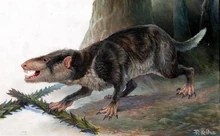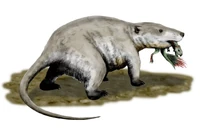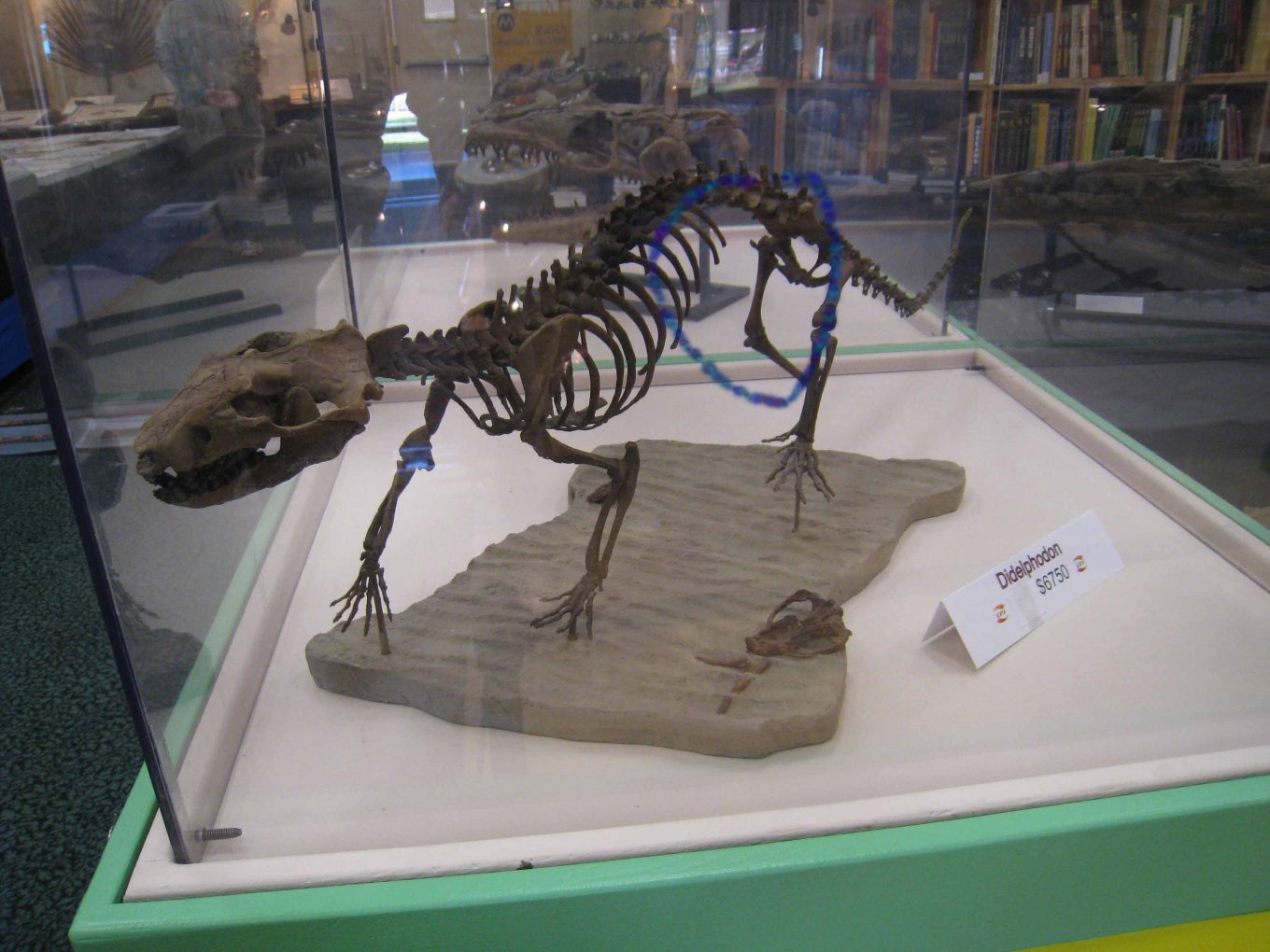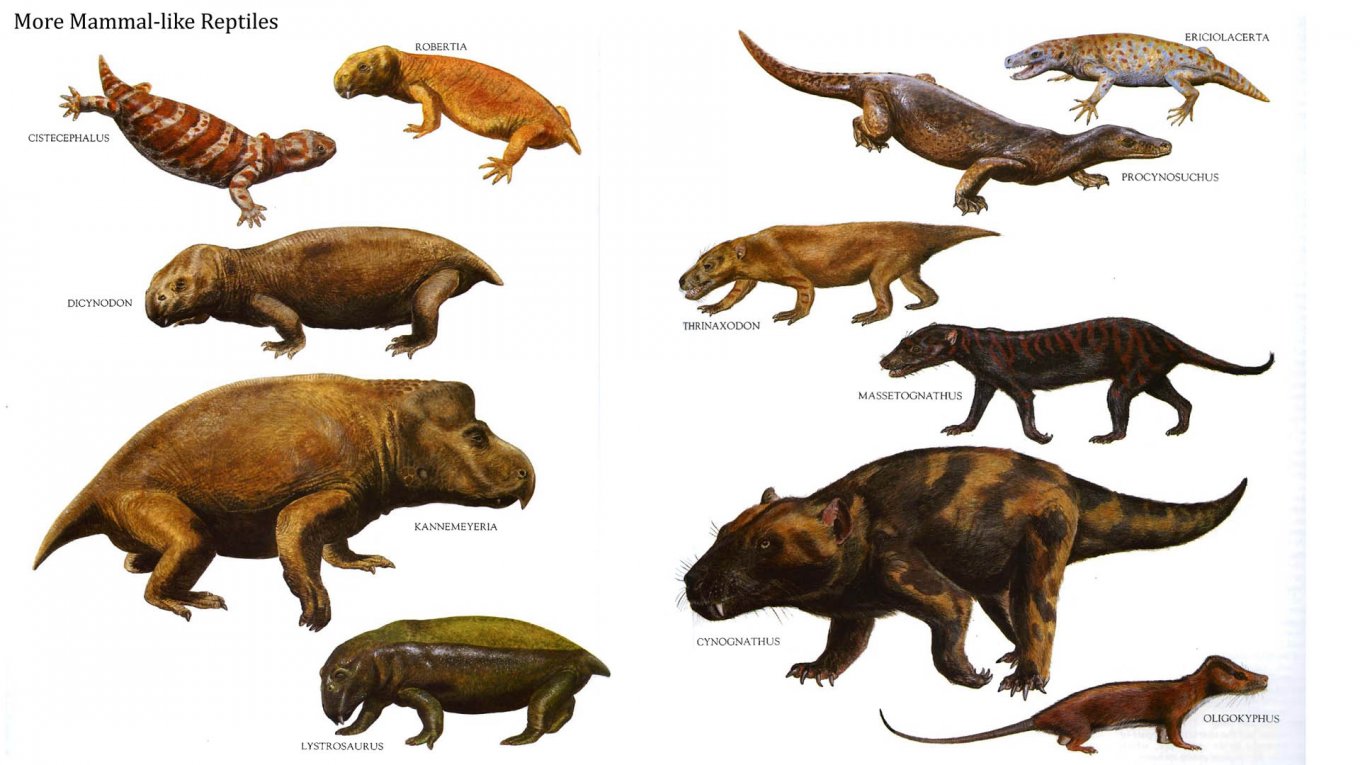Repenomamus mammals hunting for prey during the Mid-Jurassic Period of Europe. - Image ID: E1JM5E
Repenomamus
Repenomamus
Repenomamus was the largest mammal of the Age of Dinosaurs. It was the first evidence of a Mesozoic mammal that was bigger than a mouse. In fact, Repenomamus was 3 feet long and weighed 26 to 31 pounds. This made it bigger than most of the dinosaurs of Liaoning, where it lived. In fact, there is even evidence that some dinos should have hidden from Repenomamus. In the stomach of Repenomamus were the bones of a baby Psittacosaurus. This is evidence that mammals were starting to get their revenge on dinsaurs by eating them. This would make Repenomamus the T-rex of Mesozoic mammals.
Classification and species
The fossils were recovered from the lagerstätte of the Yixian Formation in the Liaoning province of China, which is renowned for its extraordinarily well-preserved fossils of feathered dinosaurs. They have been specifically dated to 130 million years ago, during the Early Cretaceous period.
Repenomamus is a genus of triconodonts, a group of early mammals with no modern relatives. R. robustus was described by Li, Wang, Wang and Li in 2000, and R. giganticus was described by Hu, Meng, Wang, Li 2005. The two known species are the sole members of the family Repenomamidae, which was also described in the same paper in 2000. It is sometimes alternatively listed as a member of the family Gobiconodontidae; although this assignment is controversial, a close relationship to this family is well-founded.
Description
Individuals of the known species in Repenomamus are the largest known Mesozoic mammals represented by reasonably complete fossils, adults of R. robustus were the size of a Virginia opossum with an estimated mass of 4–6 kg (8.8–13 lb) while the known adult of R. giganticus was about 50% larger with a total length of around 1 m (3 ft 3 in) and an estimated mass of 12–14 kg (26–31 lb). These finds extend considerably the known body size range of Mesozoic mammals, Repenomamus, in fact, were larger than several sympatric small dromaeosaurid dinosaurs like Graciliraptor.[3] Features of its shoulder and legs bones indicate an sprawling posture as in most of small to medium sized living therian mammals, with plantigrade feet, different from therian mammals however, Repenomamus had proportionally longer bodies with shorter limbs.

Cynogathus
Gobiconodon

Gobiconodon is an extinct genus of carnivorous mammal from the early Cretaceous. It weighed 10–12 pounds (4.5–5.4 kg) and measured 18–20 inches (460–510 mm). It was one of the largest mammals known from the Mesozoic. Like other gobiconodontids, it possesses several speciations towards carnivory, such as shearing molar teeth, large canine-like incisors and powerful jaw and forelimb musculature, indicating that it probably fed on vertebrate prey; rather uniquely among predatory mammals and other eutriconodonts, the lower canines were vestigial, with the first lower incisor pair having become massive and canine-like. Like the larger Repenomamus there might be some evidence of scavenging.
How common were mammals in the Cretaceous?
Actually pretty common. From right near me, a footprint plate had a few different types of mammals. Arundelconodon are some remains found near me. Mammals were found in almost every continent and ranged from small multituberculates To larger (cat sized) mammals.
They were a very diverse group and have to believe common place. The type of mammals evolved from the Jurassic to the late Cretaceous due to dietary changes with the flourishing of flowering plants. The North American faunal list is quite impressive with Didelphodon being one of the largest.







Δεν υπάρχουν σχόλια:
Δημοσίευση σχολίου